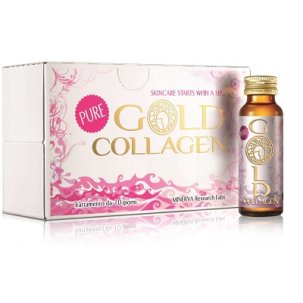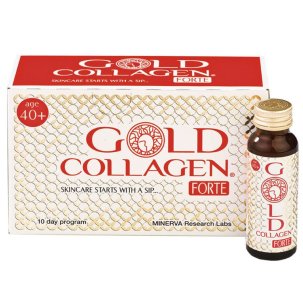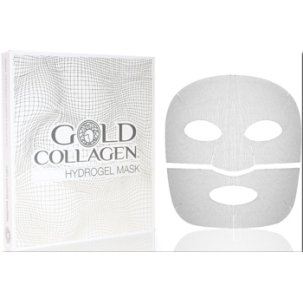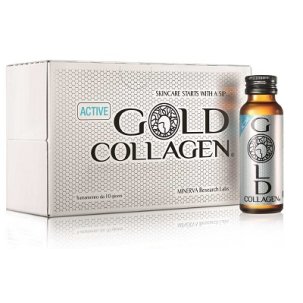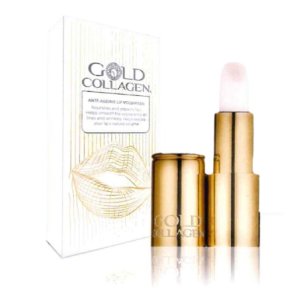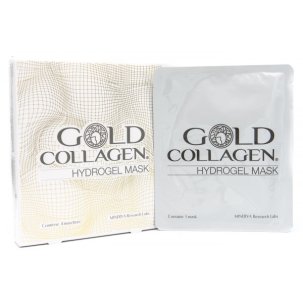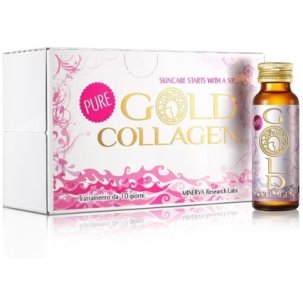Il carrello è vuoto!
Categorie
Gold collagen defence 30 compresse
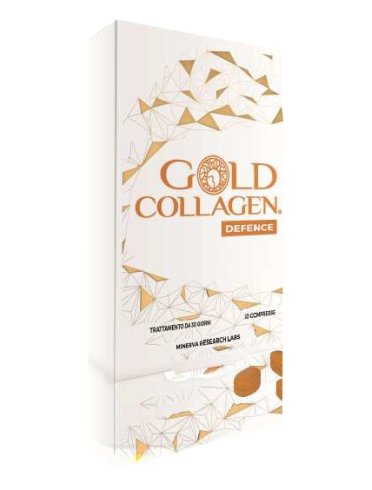
-20%

Gold collagen defence 30 compresse
Quantità
Per ulteriori informazioni, consultare la pagina Spedizioni.
| Destinazione | Spese e tempi di spedizione |
| Italia (escluse Livigno e Campione d'Italia) |
€ 5,50 - gratuita a partire da € 79,90 di spesa Tempi di consegna 24/72h |
GOLD COLLAGEN DEFENCE
Descrizione
Integratore alimentare con una formulazione unica di 17 ingredienti attivi. Èspecialmente formulato per aiutare la pelle a combattere i radicali liberi per prevenirela riduzione del collagene e mantenere la pelle, unghie e capelli sani.
Ingredienti
Vitamina C (acido L-ascorbico), glucosamina cloridrato (glucosamina HCl), estratto seccodi tè verde (40% EGCG, Camellia sinensis (L.) Kuntze), vitamina E(alfa-tocoferolo), vitamina B3 (niacina), gluconato di zinco, ialuronato di sodio,coenzima Q10 (ubidecarenone), beta-carotene, vitamina B6 (piridossina cloridrato),vitamina A (retinil acetato), gluconato di rame, estratto di pepe nero (95% piperine -Piper nigrum L.), luteina, astaxantina (soia), L-selenio metionina,vitamina H (biotina); agenti di carica: cellulosa microcristallina, calcio fosfato;antiagglomeranti: magnesio stearato vegetale, biossido di silicio; stabilizzante:carbossimetilcellulosa sodica reticolata; agenti di rivestimento:idrossipropilmetilcellulosa, cellulosa microcristallina, acido stearico; colorantialimentari: E171, E101, E172.2.
Senza glutine e lattosio.
Adatto a vegetariani e vegani.
Non contiene conservanti, zuccheri e dolcificanti artificiali.
Caratteristiche nutrizionali
*VNR: valori nutritivi di riferimento
Modalità d'uso
Si consiglia di assumere una compressa al giorno a stomaco pieno o secondo indicazionedel medico per almeno un mese, preferibilmente per un periodo più lungo perottenere risultati più duraturi.
Avvertenze
Non superare la dose giornaliera raccomandata. Tenere fuori dalla portata dei bambini aldi sotto dei 3 anni di età. Gli integratori non vanno intesi come sostituti di unadieta variata. Consultare il medico curante prima di assumere il prodotto in caso sistiano assumendo già altri integratori alimentari o in caso di allergiealimentari, di assunzione di farmaci o se sottoposti a cure mediche. Consultare il medicose si osserva una reazione indesiderata. Consultare il medico in caso di stato digravidanza o allattamento prima di assumere Gold Collagen Defence.
Conservazione
Conservare ad una temperatura inferiore a 30°C, lontano dalla luce diretta del sole edal calore e proteggere dall'umidità. La data di scadenza si riferisce al prodottoconservato correttamente con la confezione integra.
Validità a confezionamento integro: 24 mesi
Formato
Confezione da 30 compresse
Bibliografia
Baumann L: Skin ageing and its treatment. The Journal of pathology 2007, 211:241- 51.
Guercio-Hauer C, Macfarlane DF, Deleo VA: Photodamage, photoaging and photoprotection ofthe skin. American family physician 1994, 50:327-32, 34.
Thiele JJ: Oxidative targets in the stratum corneum. A new basis for antioxidativestrategies. Skin pharmacology and applied skin physiology 2001, 14 Suppl 1:87-91.
Levine RL, Stadtman ER: Oxidative modification of proteins during ageing. Experimentalgerontology 2001, 36:1495-502.
Bickers DR, Athar M: Oxidative stress in the pathogenesis of skin disease. The Journal ofinvestigative dermatology 2006, 126:2565-75.
Rani AJ, Mythili SV: Study on total antioxidant status in relation to oxidative stress intype 2 diabetes mellitus. Journal of clinical and diagnostic research: JCDR 2014,8:108-10.
Sawitzke AD, Shi H, Finco MF, Dunlop DD, Bingham CO, 3rd, Harris CL, Singer NG, BradleyJD, Silver D, Jackson CG, Lane NE, Oddis CV, Wolfe F, Lisse J, Furst DE, Reda DJ,Moskowitz RW, Williams HJ, Clegg DO: The effect of glucosamine and/or chondroitin sulfateon the progression of knee osteoarthritis: a report from the glucosamine/chondroitinarthritis intervention trial. Arthritis and rheumatism 2008, 58:3183-91.
Clegg DO, Reda DJ, Harris CL, Klein MA, O'Dell JR, Hooper MM, Bradley JD, Bingham CO,3rd, Weisman MH, Jackson CG, Lane NE, Cush JJ, Moreland LW, Schumacher HR, Jr., Oddis CV,Wolfe F, Molitor JA, Yocum DE, Schnitzer TJ, Furst DE, Sawitzke AD, Shi H, Brandt KD,Moskowitz RW, Williams HJ: Glucosamine, chondroitin sulphate, and the two in combinationfor painful knee osteoarthritis. The New England journal of medicine 2006,354:795-808.
Murad H, Tabibian MP: The effect of an oral supplement containing glucosamine, aminoacids, minerals, and antioxidants on cutaneousageing: a preliminary study. The Journal ofdermatological treatment 2001, 12:47-51.
Yuan JP, Peng J, Yin K, Wang JH: Potential health-promoting effects of astaxanthin: ahigh-value carotenoid mostly from microalgae. Molecular nutrition & food research 2011,55:150-65.
Miki W: Biological functions and activities of animal carotenoids. Pure and AppliedChemistry 1991, 63 141–6.
Matsuno T: Xanthophylls as precursors of retinoids. Pure and Applied Chemistry 1991, 63:81–8.
Lee SJ, Bai SK, Lee KS, Namkoong S, Na HJ, Ha KS, Han JA, Yim SV, Chang K, Kwon YG, LeeSK, Kim YM: Astaxanthin inhibits nitric oxide production and inflammatory gene expressionby suppressing I(kappa)B kinase-dependent NF-kappa B activation. Molecules and cells2003, 16:97-105.
Goto S, Kogure K, Abe K, Kimata Y, Kitahama K, Yamashita E, Terada H: Efficient radicaltrapping at the surface and inside the phospholipid membrane is responsible for highlypotent antiperoxidative activity of the carotenoid astaxanthin. Biochimica et biophysicaacta 2001, 1512:251-8.
Yamashita E: Suppression of post-UVB hyperpigmentation by topical astaxanthin from krill.Fragrance Journal 1995, 14:180–5.
Arakane K: Superior skin protection via astaxanthin. Carotenoid Science 2002,5:21–4.
Hama S, Takahashi K, Inai Y, Shiota K, Sakamoto R, Yamada A, Tsuchiya H, Kanamura K,Yamashita E, Kogure K: Protective effects of topical application of a poorly solubleantioxidant astaxanthin liposomal formulation on ultraviolet-induced skin damage. Journalof pharmaceutical sciences 2012, 101:2909-16.
Biswal S: Oxidative stress and astaxanthin: The novel supernutrient carotenoid.International Journal of Health & Allied Sciences 2014, 3:147-53.
Cho S, Lee DH, Won CH, Kim SM, Lee S, Lee MJ, Chung JH: Differential effects of low-doseand high-dose beta-carotene supplementation on the signs of photoaging and type Iprocollagen gene expression in human skin in vivo. Dermatology 2010, 221:160-71.
Lee J, Jiang S, Levine N, Watson RR: Carotenoid supplementation reduces erythema in humanskin after simulated solar radiation exposure. Proceedings of the Society forExperimental Biology and Medicine Society for Experimental Biology and Medicine 2000,223:170-4.
Kopcke W, Krutmann J: Protection from sunburn with beta-Carotene--a metaanalysis.Photochemistry and photobiology 2008, 84:284-8.
Littarru GP, Tiano L: Bioenergetic and antioxidant properties of coenzyme Q10: recentdevelopments. Molecular biotechnology 2007, 37:31-7.
Inui M, Ooe M, Fujii K, Matsunaka H, Yoshida M, Ichihashi M: Mechanisms of inhibitoryeffects of CoQ10 on UVB-induced wrinkle formation in vitro and in vivo. BioFactors 2008,32:237-43.
Zhang M, Dang L, Guo F, Wang X, Zhao W, Zhao R: Coenzyme Q(10) enhances dermal elastinexpression, inhibits IL-1alpha production and melanin synthesis in vitro. Internationaljournal of cosmetic science 2012, 34:273-9.
Muta-Takada K, Terada T, Yamanishi H, Ashida Y, Inomata S, Nishiyama T, Amano S: CoenzymeQ10 protects against oxidative stress-induced cell death and enhances the synthesis ofbasement membrane components in dermal and epidermal cells. BioFactors 2009,35:435-41.
Forester SC, Lambert JD: The role of antioxidant versus pro-oxidant effects of green teapolyphenols in cancer prevention. Molecular nutrition & food research 2011,55:844-54.
Ahmed S, Anuntiyo J, Malemud CJ, Haqqi TM: Biological basis for the use of botanicals inosteoarthritis and rheumatoid arthritis: a review. Evidence-based complementary andalternative medicine : eCAM 2005, 2:301-8.
Lacroix S, Bouez C, Vidal S, Cenizo V, Reymermier C, Justin V, Vicanova J, Damour O:Supplementation with a complex of active nutrients improved dermal and epidermalcharacteristics in skin equivalents generated from fibroblasts from young or aged donors.Biogerontology 2007, 8:97-109.
Madhan B, Krishnamoorthy G, Rao JR, Nair BU: Role of green tea polyphenols in theinhibition of collagenolytic activity by collagenase. International journal of biologicalmacromolecules 2007, 41:16-22.
Katiyar SK: Skin photoprotection by green tea: antioxidant and immunomodulatory effects.Current drug targets Immune, endocrine and metabolic disorders 2003, 3:234-42.
Chiu AE, Chan JL, Kern DG, Kohler S, Rehmus WE, Kimball AB: Double-blinded,placebo-controlled trial of green tea extracts in the clinical and histologic appearanceof photoaging skin. Dermatologic surgery: official publication for American Society forDermatologic Surgery [et al] 2005, 31:855- 60; discussion 60.
Watanabe-Kamiyama M, Shimizu M, Kamiyama S, Taguchi Y, Sone H, Morimatsu F, Shirakawa H,Furukawa Y, Komai M: Absorption and effectiveness of orally administered low molecularweight collagen hydrolysate in rats. Journal of agricultural and food chemistry 2010,58:835-41.
Aito-Inoue M, Lackeyram D, Fan MZ, Sato K, Mine Y: Transport of a tripeptide,Gly-Pro-Hyp, across the porcine intestinal brush-border membrane. Journal of peptidescience: an official publication of the European Peptide Society 2007, 13:468-74.
Toshihide S: Clinical effects of dietary hyaluronic acid on dry, rough skin. . AestheticDermatology 2002, 12:109-20.
Kawada C, Yoshida T, Yoshida H, Matsuoka R, Sakamoto W, Odanaka W, Sato T, Yamasaki T,Kanemitsu T, Masuda Y, Urushibata O: Ingested hyaluronan moisturizes dry skin. Nutritionjournal 2014, 13:70.
Roberts RL, Green J, Lewis B: Lutein and zeaxanthin in eye and skin health. Clinics indermatology 2009, 27:195-201.
Gonzalez S, Astner S, An W, Goukassian D, Pathak MA: Dietary lutein/zeaxanthin decreasesultraviolet B-induced epidermal hyperproliferation and acute inflammation in hairlessmice. The Journal of investigative dermatology 2003, 121:399-405.
Lee EH, Faulhaber D, Hanson KM, Ding W, Peters S, Kodali S, Granstein RD: Dietary luteinreduces ultraviolet radiation-induced inflammation and immunosuppression. The Journal ofinvestigative dermatology 2004, 122:510-7.
Palombo P, Fabrizi G, Ruocco V, Ruocco E, Fluhr J, Roberts R, Morganti P: Beneficiallong-term effects of combined oral/topical antioxidant treatment with the carotenoidslutein and zeaxanthin on human skin: a double-blind, placebo-controlled study. Skinpharmacology and physiology 2007, 20:199-210.
Integratore alimentare con una formulazione unica di 17 ingredienti attivi. Èspecialmente formulato per aiutare la pelle a combattere i radicali liberi per prevenirela riduzione del collagene e mantenere la pelle, unghie e capelli sani.
Ingredienti
Vitamina C (acido L-ascorbico), glucosamina cloridrato (glucosamina HCl), estratto seccodi tè verde (40% EGCG, Camellia sinensis (L.) Kuntze), vitamina E(alfa-tocoferolo), vitamina B3 (niacina), gluconato di zinco, ialuronato di sodio,coenzima Q10 (ubidecarenone), beta-carotene, vitamina B6 (piridossina cloridrato),vitamina A (retinil acetato), gluconato di rame, estratto di pepe nero (95% piperine -Piper nigrum L.), luteina, astaxantina (soia), L-selenio metionina,vitamina H (biotina); agenti di carica: cellulosa microcristallina, calcio fosfato;antiagglomeranti: magnesio stearato vegetale, biossido di silicio; stabilizzante:carbossimetilcellulosa sodica reticolata; agenti di rivestimento:idrossipropilmetilcellulosa, cellulosa microcristallina, acido stearico; colorantialimentari: E171, E101, E172.2.
Senza glutine e lattosio.
Adatto a vegetariani e vegani.
Non contiene conservanti, zuccheri e dolcificanti artificiali.
Caratteristiche nutrizionali
| Valori medi | Per singolo flacone (50ml) | VNR* |
| Vitamina C | 80mg | 100% |
| Glucosamina | 30mg | - |
| Estratto di tè verde | - | |
| Vitamina E(alfa-tocoferolo) | 10 mg | 83% |
| Vitamina B3 (niacina) | 10 mg | |
| Zinco | 10 mg | |
| Acido ialuronico | 5 mg | |
| Coenzima Q10 (ubidecarenone) | 3mg | - |
| Beta-carotene | 2mg | - |
| Vitamina B6 | 1,5mg | 107% |
| Vitamina A (RE) | 1mg | 125% |
| Rame | 1 mg | |
| Estratto di pepe nero | 1mg | - |
| Luteina | 0,5 mg | |
| Astaxantina | 0,5 mg | |
| Selenio | 0,07 mg | |
| Vitamina H (biotina) | 0,05mg | 100% |
Modalità d'uso
Si consiglia di assumere una compressa al giorno a stomaco pieno o secondo indicazionedel medico per almeno un mese, preferibilmente per un periodo più lungo perottenere risultati più duraturi.
Avvertenze
Non superare la dose giornaliera raccomandata. Tenere fuori dalla portata dei bambini aldi sotto dei 3 anni di età. Gli integratori non vanno intesi come sostituti di unadieta variata. Consultare il medico curante prima di assumere il prodotto in caso sistiano assumendo già altri integratori alimentari o in caso di allergiealimentari, di assunzione di farmaci o se sottoposti a cure mediche. Consultare il medicose si osserva una reazione indesiderata. Consultare il medico in caso di stato digravidanza o allattamento prima di assumere Gold Collagen Defence.
Conservazione
Conservare ad una temperatura inferiore a 30°C, lontano dalla luce diretta del sole edal calore e proteggere dall'umidità. La data di scadenza si riferisce al prodottoconservato correttamente con la confezione integra.
Validità a confezionamento integro: 24 mesi
Formato
Confezione da 30 compresse
Bibliografia
Baumann L: Skin ageing and its treatment. The Journal of pathology 2007, 211:241- 51.
Guercio-Hauer C, Macfarlane DF, Deleo VA: Photodamage, photoaging and photoprotection ofthe skin. American family physician 1994, 50:327-32, 34.
Thiele JJ: Oxidative targets in the stratum corneum. A new basis for antioxidativestrategies. Skin pharmacology and applied skin physiology 2001, 14 Suppl 1:87-91.
Levine RL, Stadtman ER: Oxidative modification of proteins during ageing. Experimentalgerontology 2001, 36:1495-502.
Bickers DR, Athar M: Oxidative stress in the pathogenesis of skin disease. The Journal ofinvestigative dermatology 2006, 126:2565-75.
Rani AJ, Mythili SV: Study on total antioxidant status in relation to oxidative stress intype 2 diabetes mellitus. Journal of clinical and diagnostic research: JCDR 2014,8:108-10.
Sawitzke AD, Shi H, Finco MF, Dunlop DD, Bingham CO, 3rd, Harris CL, Singer NG, BradleyJD, Silver D, Jackson CG, Lane NE, Oddis CV, Wolfe F, Lisse J, Furst DE, Reda DJ,Moskowitz RW, Williams HJ, Clegg DO: The effect of glucosamine and/or chondroitin sulfateon the progression of knee osteoarthritis: a report from the glucosamine/chondroitinarthritis intervention trial. Arthritis and rheumatism 2008, 58:3183-91.
Clegg DO, Reda DJ, Harris CL, Klein MA, O'Dell JR, Hooper MM, Bradley JD, Bingham CO,3rd, Weisman MH, Jackson CG, Lane NE, Cush JJ, Moreland LW, Schumacher HR, Jr., Oddis CV,Wolfe F, Molitor JA, Yocum DE, Schnitzer TJ, Furst DE, Sawitzke AD, Shi H, Brandt KD,Moskowitz RW, Williams HJ: Glucosamine, chondroitin sulphate, and the two in combinationfor painful knee osteoarthritis. The New England journal of medicine 2006,354:795-808.
Murad H, Tabibian MP: The effect of an oral supplement containing glucosamine, aminoacids, minerals, and antioxidants on cutaneousageing: a preliminary study. The Journal ofdermatological treatment 2001, 12:47-51.
Yuan JP, Peng J, Yin K, Wang JH: Potential health-promoting effects of astaxanthin: ahigh-value carotenoid mostly from microalgae. Molecular nutrition & food research 2011,55:150-65.
Miki W: Biological functions and activities of animal carotenoids. Pure and AppliedChemistry 1991, 63 141–6.
Matsuno T: Xanthophylls as precursors of retinoids. Pure and Applied Chemistry 1991, 63:81–8.
Lee SJ, Bai SK, Lee KS, Namkoong S, Na HJ, Ha KS, Han JA, Yim SV, Chang K, Kwon YG, LeeSK, Kim YM: Astaxanthin inhibits nitric oxide production and inflammatory gene expressionby suppressing I(kappa)B kinase-dependent NF-kappa B activation. Molecules and cells2003, 16:97-105.
Goto S, Kogure K, Abe K, Kimata Y, Kitahama K, Yamashita E, Terada H: Efficient radicaltrapping at the surface and inside the phospholipid membrane is responsible for highlypotent antiperoxidative activity of the carotenoid astaxanthin. Biochimica et biophysicaacta 2001, 1512:251-8.
Yamashita E: Suppression of post-UVB hyperpigmentation by topical astaxanthin from krill.Fragrance Journal 1995, 14:180–5.
Arakane K: Superior skin protection via astaxanthin. Carotenoid Science 2002,5:21–4.
Hama S, Takahashi K, Inai Y, Shiota K, Sakamoto R, Yamada A, Tsuchiya H, Kanamura K,Yamashita E, Kogure K: Protective effects of topical application of a poorly solubleantioxidant astaxanthin liposomal formulation on ultraviolet-induced skin damage. Journalof pharmaceutical sciences 2012, 101:2909-16.
Biswal S: Oxidative stress and astaxanthin: The novel supernutrient carotenoid.International Journal of Health & Allied Sciences 2014, 3:147-53.
Cho S, Lee DH, Won CH, Kim SM, Lee S, Lee MJ, Chung JH: Differential effects of low-doseand high-dose beta-carotene supplementation on the signs of photoaging and type Iprocollagen gene expression in human skin in vivo. Dermatology 2010, 221:160-71.
Lee J, Jiang S, Levine N, Watson RR: Carotenoid supplementation reduces erythema in humanskin after simulated solar radiation exposure. Proceedings of the Society forExperimental Biology and Medicine Society for Experimental Biology and Medicine 2000,223:170-4.
Kopcke W, Krutmann J: Protection from sunburn with beta-Carotene--a metaanalysis.Photochemistry and photobiology 2008, 84:284-8.
Littarru GP, Tiano L: Bioenergetic and antioxidant properties of coenzyme Q10: recentdevelopments. Molecular biotechnology 2007, 37:31-7.
Inui M, Ooe M, Fujii K, Matsunaka H, Yoshida M, Ichihashi M: Mechanisms of inhibitoryeffects of CoQ10 on UVB-induced wrinkle formation in vitro and in vivo. BioFactors 2008,32:237-43.
Zhang M, Dang L, Guo F, Wang X, Zhao W, Zhao R: Coenzyme Q(10) enhances dermal elastinexpression, inhibits IL-1alpha production and melanin synthesis in vitro. Internationaljournal of cosmetic science 2012, 34:273-9.
Muta-Takada K, Terada T, Yamanishi H, Ashida Y, Inomata S, Nishiyama T, Amano S: CoenzymeQ10 protects against oxidative stress-induced cell death and enhances the synthesis ofbasement membrane components in dermal and epidermal cells. BioFactors 2009,35:435-41.
Forester SC, Lambert JD: The role of antioxidant versus pro-oxidant effects of green teapolyphenols in cancer prevention. Molecular nutrition & food research 2011,55:844-54.
Ahmed S, Anuntiyo J, Malemud CJ, Haqqi TM: Biological basis for the use of botanicals inosteoarthritis and rheumatoid arthritis: a review. Evidence-based complementary andalternative medicine : eCAM 2005, 2:301-8.
Lacroix S, Bouez C, Vidal S, Cenizo V, Reymermier C, Justin V, Vicanova J, Damour O:Supplementation with a complex of active nutrients improved dermal and epidermalcharacteristics in skin equivalents generated from fibroblasts from young or aged donors.Biogerontology 2007, 8:97-109.
Madhan B, Krishnamoorthy G, Rao JR, Nair BU: Role of green tea polyphenols in theinhibition of collagenolytic activity by collagenase. International journal of biologicalmacromolecules 2007, 41:16-22.
Katiyar SK: Skin photoprotection by green tea: antioxidant and immunomodulatory effects.Current drug targets Immune, endocrine and metabolic disorders 2003, 3:234-42.
Chiu AE, Chan JL, Kern DG, Kohler S, Rehmus WE, Kimball AB: Double-blinded,placebo-controlled trial of green tea extracts in the clinical and histologic appearanceof photoaging skin. Dermatologic surgery: official publication for American Society forDermatologic Surgery [et al] 2005, 31:855- 60; discussion 60.
Watanabe-Kamiyama M, Shimizu M, Kamiyama S, Taguchi Y, Sone H, Morimatsu F, Shirakawa H,Furukawa Y, Komai M: Absorption and effectiveness of orally administered low molecularweight collagen hydrolysate in rats. Journal of agricultural and food chemistry 2010,58:835-41.
Aito-Inoue M, Lackeyram D, Fan MZ, Sato K, Mine Y: Transport of a tripeptide,Gly-Pro-Hyp, across the porcine intestinal brush-border membrane. Journal of peptidescience: an official publication of the European Peptide Society 2007, 13:468-74.
Toshihide S: Clinical effects of dietary hyaluronic acid on dry, rough skin. . AestheticDermatology 2002, 12:109-20.
Kawada C, Yoshida T, Yoshida H, Matsuoka R, Sakamoto W, Odanaka W, Sato T, Yamasaki T,Kanemitsu T, Masuda Y, Urushibata O: Ingested hyaluronan moisturizes dry skin. Nutritionjournal 2014, 13:70.
Roberts RL, Green J, Lewis B: Lutein and zeaxanthin in eye and skin health. Clinics indermatology 2009, 27:195-201.
Gonzalez S, Astner S, An W, Goukassian D, Pathak MA: Dietary lutein/zeaxanthin decreasesultraviolet B-induced epidermal hyperproliferation and acute inflammation in hairlessmice. The Journal of investigative dermatology 2003, 121:399-405.
Lee EH, Faulhaber D, Hanson KM, Ding W, Peters S, Kodali S, Granstein RD: Dietary luteinreduces ultraviolet radiation-induced inflammation and immunosuppression. The Journal ofinvestigative dermatology 2004, 122:510-7.
Palombo P, Fabrizi G, Ruocco V, Ruocco E, Fluhr J, Roberts R, Morganti P: Beneficiallong-term effects of combined oral/topical antioxidant treatment with the carotenoidslutein and zeaxanthin on human skin: a double-blind, placebo-controlled study. Skinpharmacology and physiology 2007, 20:199-210.


